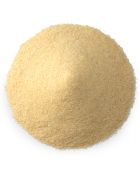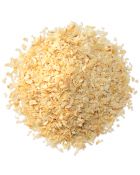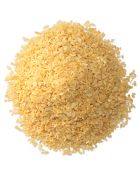Onion and Garlic Market Report - May 2020
US ONION
As of mid-April, the overall 2020 US onion crop is likely to be slightly lower (~2.6%) than 2019 levels. Despite this, the overall crop is still in good shape. Harvest started gradually at the end of April and will be fully underway by mid-May. Harvest labor availability is adequate and has not been impacted by the COVID-19 situation.
Meanwhile, overall market demand saw an appreciable jump during March – driven by COVID-19 linked “pantry-filling” in the CPG/Retail sector, as well as food manufacturing segments. Delayed shipments from India, due to the COVID-19 lockdown, combined with low carry-in stock, created sales opportunities for those US processors who had inventory readily available. Market demand also showed strength, as more buyers pulled orders forward to ship in April and May. This trend is expected to continue through Q2.
EGYPTIAN ONION
Egypt’s CY19 - 20 winter yellow onion crop is now fully harvested and mostly sold/committed at this time. Fresh onion demand saw a spike towards the end of Q1, 2020 primarily from the Middle East and caused an increase in raw material prices for some time.
This sentiment will return to normal once the summer crop harvest commences in May 2020. Meanwhile, Olam Egypt’s white onion harvest preparation is proceeding as planned and will also commence in mid-May. A normal crop is expected.


OTHER ORIGINS
Informal reports from Indian dehydrated onion processors paint a bleak picture of the season. Due to the country-wide lockdown, wholesale onion markets in Gujarat and Maharashtra had not been given permission to start until the end of April. So, a majority of the dehydrated onion processors were unable to buy raw material.
The harvested onion was diverted to the fresh market, where demand is high. The lockdown of factory operations in India has severely curtailed production in the new season, significantly delayed shipments of Indian onion and will effectively reduce the season by 2 - 3 months. With extremely low carry-in inventories to start with, total production in the CY20 Indian crop is now likely to be only 45-50,000 MT (down by 28-35% from estimates at the beginning of the year of ~70,000 MT).
Chinese suppliers do not have adequate inventory deployed in the US, Europe or other key markets to participate in the demand surge and many buyers are making a conscious choice to mitigate supply chain risk and dependence on China, by shifting to verifiable, traceable, local supply.
FUTURE OUTLOOK
US
- Current inventories of US onion are adequate to service market demand for most fractions / micros through the middle of the year. New crop arrivals will extend this availability as the harvest progresses. However, specialty piece fractions and low / extra low micro items remain in tight supply and will continue to command premiums
- Irradiation and toasted product lead times have increased due to demand surge for these items and irradiation costs could move up again in Q2, 2020 as well – driven by competing demand from the medical sector. Moving forward, US onion prices are also expected to correct upwards 3 - 5% for grower cost-push inflation and increased labor rates
Egypt
- Winter crop availability is limited and this has caused prices to firm up since Q1. Increased demand for fresh onion is also likely in the coming months, due to crop shortages in EU and India
- This could cause some volatility in summer crop pricing in the medium term. Egypt white onion pricing, however, is expected to remain stable at this time
Other Origins
- Indian dried onion availability continues to remain uncertain while the lockdown is in force. While some processors are claiming that they have secured permission to resume operations in May, it will still take a while for the units to secure raw material, find labor, carry out production and fill up supply chain pipelines
- Blank sailings from Indian ports could therefore still continue for a while before the shipment situation improves. Indian onion prices are likely to increase as a result and Chinese pricing is likely to mimic this, for most markets
US GARLIC
As of mid-April, overall, 2020 US garlic production is likely to be up ~8% over 2019, instead of 10% as indicated in our last update. This reduction is driven largely by crop yield and recovery risk from rust and mildew instances experienced in some areas. Suitable actions are being taken to address the challenges by all processors and the situation is under control. Crop harvest is expected to commence in July, on schedule.
Similar to onion, US garlic demand saw a surge in buyer pulls across all segments from late February onwards. Initial demand was driven by the extended Lunar New Year holiday in China and subsequent blank sailings, which caused short-term panic because of supply chain shortages. However, after Chinese factories resumed operations and shipments, buyer demand for US garlic remained buoyant, which has been especially strong in the CPG/Retail area.
Additionally, a profound market shift is currently underway across all segments. This change is driven by the need for strong food safety programs coupled with a reliable, verifiable and traceable supply chain; consequently, the market is turning to the US to fill this gap.
CHINESE GARLIC
The 2020 Chinese garlic early seed variety crop harvest commenced in mid-April and the late seed variety harvest is expected to commence in mid-May. Crop acreage is up over last year and the crop progress has been normal. Carry forward inventories of both fresh and dried garlic from previous seasons are high and there is adequate material to service normal demand.
FUTURE OUTLOOK
US
- US dried garlic prices are likely to remain stable through the next season
- Low and extra low micro availability is tight for the moment, but is expected to improve with the new crop
- Organic US garlic is available for normal demand. Growth remains strong and continues to increase year over year
- Olam Spices’ Gilroy facility will be making major upgrades to packaging and metal detection in 2020. Together with the CA garlic cost-in-use flavor superiority, economy garlic and organic offerings, Olam’s CA garlic offers a compelling value proposition for fully traceable, AtSource verified, Non-GMO, gluten-free, peanut allergen free garlic
China
- Flake prices are expected to remain stable through Q2, 2020 from current levels, but could weaken once harvest ends
- Most US customers are covered through Q2 for normal demand but will need to step in to take coverage by mid-year, especially to fill up depleted inventories from the demand surge since March. Demand should therefore strengthen by end of Q2. European and other markets are likely to see the same behavior
- While there is adequate flake inventory available in China, the next 2 months are typically lean for garlic processing, as they are high humidity, high temperature months, which are not the most conducive for garlic flaking and milling. Most dehydration and milling operations are therefore carried out later in August/September
- If the demand surge to replenish depleted stocks continues in May/June, there could be some shipment delay or supply tightness if processing units are not operating, due to weather and humidity factors previously mentioned
- Destination availability will be critical and spot premiums for prompt delivery could increase as a result




